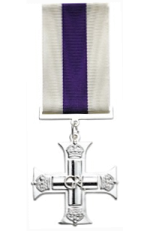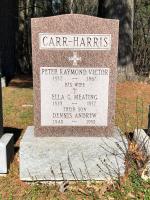On 23 May 1944, at 0600 hours, the 2nd Canadian Infantry Brigade, Princess Patricia’s Canadian Light Infantry right and the Seaforth Highlanders left, assaulted the Adolf Hilter Line with the 3rd Field Company in support. The unit's war diary describes the day well.
Reveille sounded at 0400 hours and the Sapper detachments were soon on their way to join their infantry battalions. The barrage opened at 0500 hours and the leading infantry companies set off at 0600 hours with sappers in close support. All went well until 0740 hours when a minefield was reported in the PPCLI area. The platoon commander, Lieutenant Carr-Harris, had lost touch with both the engineer and infantry headquarters. Sergeant Kerr was sent forward with a party of sappers to deal with the delay but was pinned down by enemy fire, losing three sappers. As it turned out, Carr-Harris was already in the thick of it. He had taken his men with him as soon as the tanks encountered the minefield and the anti-tank guns covering it from a distance. Under pressing pressure from artillery and directed machine-gun fire, the sappers were able to find a way through the minefield. Lieutenant Carr-Harris, Lance Sergeant Irvine and Acting Corporal Harrison were all decorated for bravery that day. The hell the sappers suffered that day on the Hitler Line saw the worst carnage of the Italian Campaign. By the end of the day the Hitler Line was smashed and the 5th Armoured Division started moving forward to seize a crossing on the Melfa River to open the Road to Rome. The 3rd Field Company had lost five killed and 13 wounded or missing
Biography
Peter Raymond Victor Carr-Harris was born in Dorset, England in 1917. He was the son of Lieutenant Victor Cunis, a Great War veteran of the Seaforth Highlanders and Royal Field Artillery, and Mercy Eileen Gay Hayes. In 1923, his parents divorced. His mother emigrated to Canada with her two sons, Peter and new-born Phillip. She married Gordon Grant Macdonnell Carr-Harris in Montreal in 1924.
After the war, Peter remained in the RCE in various positions. Major Peter Carr-Harris coached the Royal Military College hockey team from 1955 until 1960, recording four victories against West Point. The annual RMC-Queen's hockey tournament, played for over 100 years, is named for the Carr-Harris family who had a close connection with the College with a minimum of eight members from various generations as graduates, including his father, uncles and cousins. His older brother, Phillip, nicknamed Beef, played for five Toronto Argonauts teams in the late 40s during which time they won three Grey Cup championships.
Major Peter Victor Carr-Harris, MC, CD died in 1967 and is buried in the Cataraqui Cemetery in Kingston with his second wife, Ellen and son Dennis. RMC has a pair of benches located behind the Currie Building, near the Sawyer Building, dedicated to him and Lt. Ella Carr-Harris.
On 23 May 1944, 2 Canadian Infantry Brigade supported by the North Irish Horse, Royal Armoured Corps, attacked the Adolph Hitler Line between Acquino (Map Reference 7421) and Pontecorvo (Map Reference 7217). Lieutenant Carr-Harris was detailed to command a mine sweeping party to move forward with the leading battalion, the Princess Patricia's Canadian Light Infantry. This was to ensure that the tanks in support of the regiment got through the enemy defences.
At 0740 hours the tanks ran into a minefield in the area Map Reference 74718, 6. This Engineer officer at once moved forward with his party and in spite of heavy enemy artillery, mortar and machine gun fire began to sweep a line through the minefield. He carried on this task until he was wounded in the arm. In spite of his wound he refused to leave the battlefield until he was certain that the tanks were able to advance.
Lieutenant Carr-Harris' personal bravery and determination were an inspiring example to his men to carry on with the difficult task.


